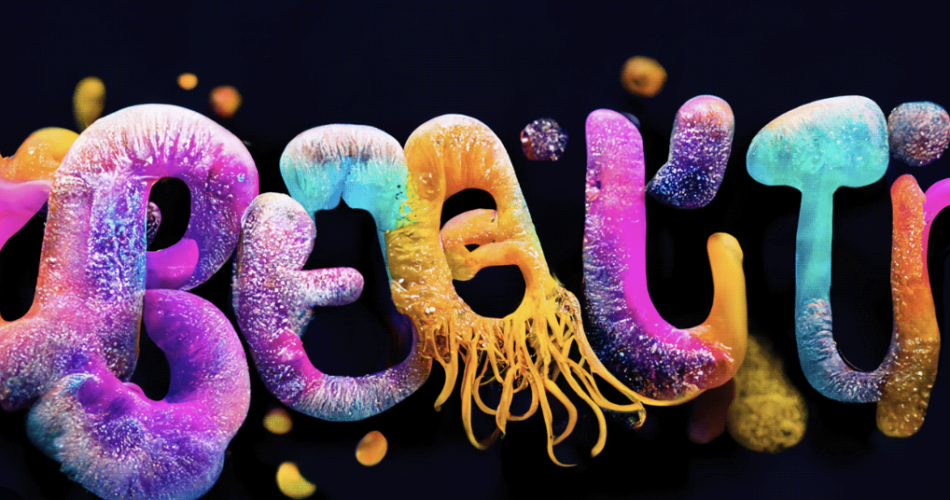Artificial Intelligence (AI) has been steadily transforming various industries, and the world of design is no exception. One of the most captivating developments in this realm is the emergence of AI typography. This groundbreaking technology is redefining the way designers approach the art of visual communication, opening up new creative avenues and transforming the very foundations of the craft.

ai typography
In this comprehensive article, we will delve into the fascinating world of AI typography, exploring its evolution, advantages, and the challenges it presents. We’ll also examine the tools and resources available for designers to harness the power of this cutting-edge technology, and showcase inspiring case studies of successful AI typography projects.
Contents
- 1 Understanding the Basics of AI and Typography
- 2 The Evolution of Typography with AI
- 3 Advantages of AI-powered Typography
- 4 Examples of AI Typography in Design
- 5 Challenges and Limitations of AI Typography
- 6 The Future of AI Typography in Design
- 7 AI Typography Tools and Resources
- 8 Case Studies of Successful AI Typography Projects
Understanding the Basics of AI and Typography
At the intersection of artificial intelligence and the timeless art of typography lies a realm of endless possibilities. AI, with its ability to process vast amounts of data, recognize patterns, and generate creative solutions, has found a natural home in the world of typography.
Typography, the art of arranging and designing text, has long been a critical component of visual communication. It not only conveys information but also evokes emotions and sets the tone for a design. With the integration of AI, this age-old discipline is being transformed, unlocking new avenues for creativity and innovation.
The Evolution of Typography with AI
The evolution of AI typography can be traced back to the early days of computer-aided design (CAD) and the subsequent advancements in machine learning and neural networks. As the computational power of computers grew, so did the ability to automate and optimize various aspects of the design process, including typography.
In the past, the creation and manipulation of typefaces were predominantly manual tasks, requiring extensive training and expertise. However, with the advent of AI-powered tools, the process has become more streamlined, efficient, and accessible to a wider range of designers and creatives.
Advantages of AI-powered Typography
The integration of AI in the field of typography has brought about a multitude of advantages, revolutionizing the way designers approach their craft. Some of the key benefits include:
- Increased Efficiency: AI-powered tools can automate repetitive tasks, such as font selection, kerning, and layout optimization, allowing designers to focus on the more creative aspects of their work.
- Enhanced Creativity: AI systems can analyze vast collections of typefaces, identify patterns, and generate novel font variations and design concepts, inspiring designers to explore new creative avenues.
- Personalization and Customization: AI algorithms can tailor typography to specific user preferences, target audiences, and design contexts, ensuring a more personalized and impactful visual experience.
- Improved Accessibility: AI-powered tools can enhance the accessibility of typography by optimizing readability, legibility, and adaptability across various devices and platforms.
- Data-Driven Decision Making: AI can provide designers with valuable insights and analytics, enabling them to make more informed decisions about typography based on user behavior, performance metrics, and industry trends.
Examples of AI Typography in Design
The impact of AI typography can be seen across various design disciplines, from branding and advertising to web design and editorial layouts. Here are a few compelling examples:
- Dynamic Logotypes: AI-powered tools can generate responsive, adaptive logotypes that seamlessly adjust their typography to different contexts, devices, and screen sizes.
- Personalized Newsletters: AI algorithms can analyze user preferences and tailor the typography, layout, and content of digital newsletters to individual subscribers, enhancing engagement and readability.
- Adaptive Headline Generation: AI systems can generate dynamic, attention-grabbing headlines that adapt to the content and target audience, optimizing for maximum impact.
- Multilingual Typesetting: AI can facilitate the seamless integration of multiple languages and writing systems within a single design, ensuring consistent typography and layout across global markets.
- Generative Font Design: AI-powered tools can create entirely new typeface designs by analyzing and recombining elements from existing fonts, pushing the boundaries of traditional typography.
Challenges and Limitations of AI Typography
While the advancements in AI typography have been remarkable, the technology is not without its challenges and limitations. Some of the key considerations include:
- Preserving Artistic Integrity: Designers must strike a delicate balance between leveraging the power of AI and maintaining the unique, human-centric qualities that define great typography.
- Ethical Considerations: The use of AI in typography raises questions about authorship, intellectual property, and the potential for bias and discrimination in the design process.
- Technological Limitations: Current AI systems may struggle with complex typographic nuances, such as contextual kerning, optical adjustments, and the subtleties of hand-crafted letterforms.
- User Acceptance: Designers and clients may be hesitant to fully embrace AI-powered typography, preferring the traditional, manual approach to type design and layout.
- Ongoing Skill Development: As AI becomes more integrated into the design workflow, designers must continually adapt and develop new skills to effectively collaborate with and harness the capabilities of these technologies.
The Future of AI Typography in Design
As the field of AI continues to evolve, the future of typography holds immense promise. Designers and creative professionals can expect to see even more advanced AI-powered tools and techniques that will redefine the way we conceptualize, create, and interact with typography.
Some of the exciting developments on the horizon include:
- Generative Design: AI systems will become increasingly adept at generating original typeface designs, pushing the boundaries of traditional typography and inspiring new creative directions.
- Intelligent Layout Optimization: AI algorithms will be able to analyze and optimize the placement, spacing, and hierarchy of text elements, ensuring optimal readability and visual appeal across various platforms and devices.
- Adaptive Typographic Experiences: AI-powered typography will adapt seamlessly to user preferences, environmental factors, and changing contexts, delivering a truly personalized and dynamic visual experience.
- Multimodal Typography: The integration of AI with other emerging technologies, such as augmented reality and voice interfaces, will enable new modes of typographic expression and interaction.
- Ethical and Inclusive Design: As the design community grapples with the ethical implications of AI, there will be a growing emphasis on developing AI-powered tools and workflows that promote diversity, accessibility, and inclusivity in typography.
AI Typography Tools and Resources
Designers and creatives interested in exploring the world of AI typography have access to a growing ecosystem of tools and resources. Some of the notable options include:
- AI-Powered Font Generators: Tools like FontJoy, Fontself, and Fontbot leverage machine learning to generate unique font variations and designs.
- Layout and Composition Optimization: Solutions like Canva’s AI-powered layout tools and Adobe’s Sensei can assist with optimizing the placement and hierarchy of text elements.
- Typographic Analysis and Insights: Services like Fontrank and Fontshop’s AI-powered font recommendations provide designers with data-driven insights to inform their typographic choices.
- Educational Resources: Platforms like Coursera, Udemy, and Skillshare offer online courses and tutorials on the intersection of AI and typography, helping designers stay up-to-date with the latest trends and techniques.
- Collaborative Design Platforms: Tools like Figma and Canva integrate AI-powered features that enable designers to seamlessly incorporate AI typography into their collaborative workflows.
Case Studies of Successful AI Typography Projects
To illustrate the transformative power of AI typography, let’s explore a few case studies of successful projects:
- Coca-Cola’s Dynamic Logotype: The iconic Coca-Cola brand partnered with AI-powered design agency Huge to create a responsive, adaptive logotype that adjusts its typography based on various environmental and contextual factors.
- The New York Times’ Personalized Newsletters: The New York Times leveraged AI algorithms to analyze user preferences and automatically generate personalized newsletter designs with tailored typography and layout.
- Spotify’s Generative Album Artwork: Music streaming giant Spotify experimented with AI-powered font generation to create unique, algorithmically-generated album artwork that reflected the mood and genre of the music.
- Ikea’s Multilingual Catalogs: Furniture retailer Ikea utilized AI-powered typesetting tools to seamlessly integrate multiple languages and writing systems within their global product catalogs, ensuring consistent branding and readability.
- Airbnb’s Adaptive Headline Generation: The travel platform Airbnb employed AI algorithms to dynamically generate attention-grabbing headlines that resonated with specific user segments, improving click-through rates and engagement.
These case studies demonstrate the transformative potential of AI typography, highlighting how leading brands and organizations are leveraging this technology to enhance their visual communication, improve user experiences, and push the boundaries of creative expression.
Discover the power of AI-powered typography and how it can revolutionize your design approach. Contact our team of experts today to learn more about the latest tools, techniques, and best practices for integrating AI into your creative workflow.
